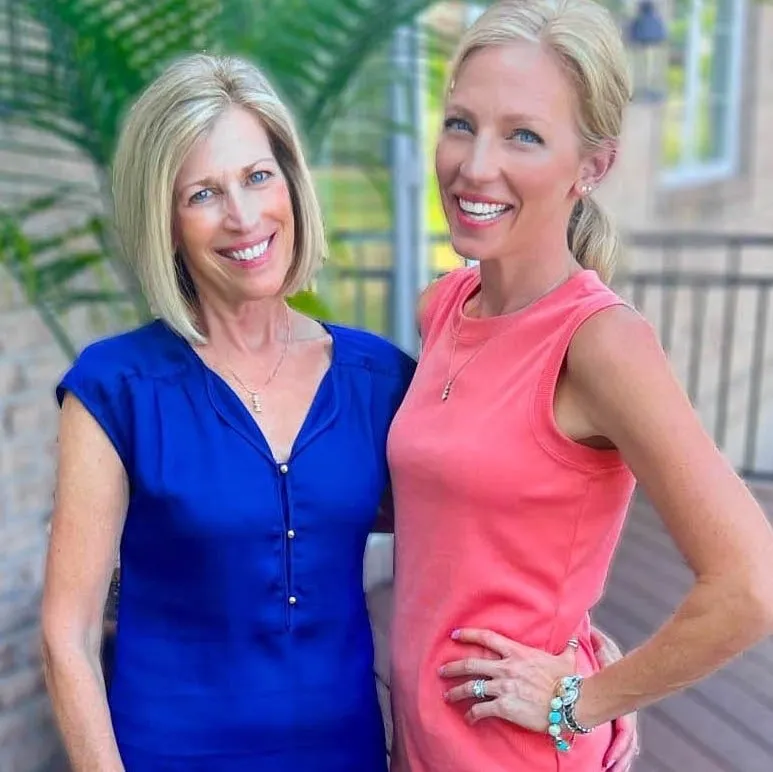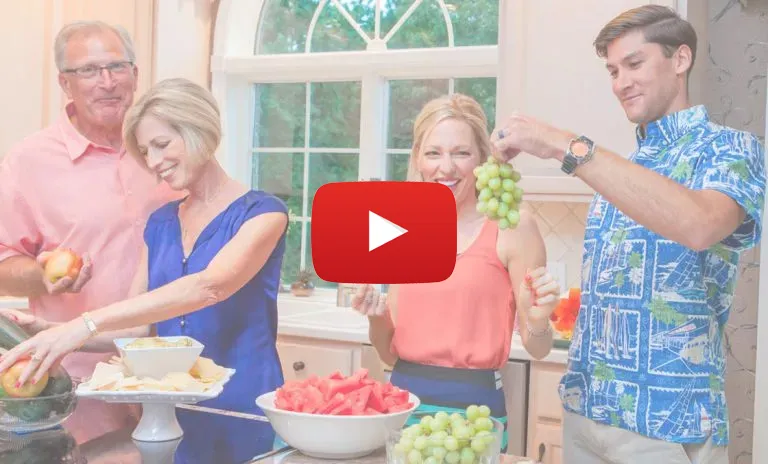When you want your clean to be more green!
One of the best choices you can make for your family is to adapt a more eco-friendly lifestyle. An easy way to start is by using homemade household cleaners made with a few basic ingredients. An added bonus to these DIY all-purpose cleaners is that they can be made at a fraction of the cost of what you will pay for cleaners at the store.
The down and dirty on most conventional cleaning supplies
Did you know that most conventional cleaning products, especially in the kitchen, contain a myriad of harmful chemicals that can wreak havoc on your health? Many of the toxic chemicals used in these products can absorb into your skin and your bloodstream.
According to the Environmental Protection Agency, “Manufacturers are not required to list all of the ingredients on cleaning product labels. Words such as “natural,” “non-toxic” and “green” that appear on cleaning product labels are poorly regulated by the government. Researchers have found that cleaning products labeled with these terms often have as many hazardous chemicals as conventional cleaning products.”
Because these gaps in information make it difficult to discern which products are actually eco-friendly and which aren’t, why not eliminate unnecessary anxiety and make our own?
With a few simple, eco-friendly ingredients you can clean just about any surface in your home.
Contrary to popular belief, natural cleaners can be just as effective as conventional. All of these sanitizers are environmentally friendly, safer for babies and pets to be around and incredibly versatile.
The staple cleaning ingredients
- Baking soda/ washing soda (stronger/ more effective)
- Branch Basics concentrate
- Castile soap
- This can be found in most stores: Target, Walmart, grocery stores and Amazon.
- The brand Dr. Bronner’s is hands-down the reigning champion. It comes in unscented (perfect for babies), as well as scented, such as tea tree and citrus, so you don’t need to add any essential oils for fragrance.
- Dr. Bronner’s Sal Suds
- Hydrogen peroxide
- Lemongrass organic essential oil
- Oxygen bleach (not to be confused with chlorine bleach)
- Water (distilled is best)
- White vinegar
Pro tip: Vinegar and castile soap don’t mix well together. Because the vinegar is an acid and the soap a base, they end up neutralizing each other. If you want to use both on the same area, use your soap mixture first, rinse and follow up with vinegar.
The staple materials
- 16 oz. spray bottle for storage
- 16 oz. mason jar for storage
- Microfiber cloths, old rags, hand towels or shirts for cleaning
- Scouring pad/sponge for cleaning
What to store your cleaner in
You can store your cleaners in any spray bottle, but we’ve had a lot of success with dark-colored glass bottles. We use chalkboard labels to quickly and easily identify our cleaners. Why dark bottles? If you’re using hydrogen peroxide in your cleaner, it’ll decompose to water if it’s exposed to light.

Our two favorite DIY multipurpose cleaners
Sterilizing Multipurpose Cleaner
- 1 cup white vinegar
- 3/4 cup distilled water
- 1/2 teaspoon Sal Suds
- A 16 oz. spray bottle for storage
Pour all ingredients into a glass spray bottle, adding the Sal Suds last. Tightly seal and gently shake to combine. Shake before each use.
This cleaner is pet friendly. (Pam has a parrot, which is extremely sensitive to harsh chemicals and smells. She uses this recipe to sanitize and clean their parrot’s cage weekly.) Do not use this cleaner on granite or marble surfaces (due to vinegar).
Citrus Multipurpose Cleaner
- 2 lemon or 1 large orange peel (try not to include pith, the white stuff between the fruit and peel, as it can make the solution sticky)
- 1 cup vinegar
- 1 cup (distilled) water
- Mason jar
Pack a mason jar with the citrus peels and fill with vinegar. Tightly seal lid and allow mixture to sit and infuse for 2-3 weeks. Discard the peels and pour the citrus vinegar into a spray bottle. Add your water, screw on lid and shake to combine. Shake well before each use.

Reusable trumps recyclable. Let’s save a tree! (and some dough)
You can eliminate a lot of waste and save money by minimizing the amount of paper products you use. We’ve found that microfiber cloths, old rags, hand towels or shirts (we’ve even used retired baby clothes) clean much better than paper products.
We keep a small basket in the laundry room, like this one from Target, to toss dirty towels and rags in. When the basket is full, we wash them in hot water, vinegar and laundry detergent.
Where to begin and what to use
One of the biggest challenges when cleaning your kitchen is knowing where to begin and what to use. Here’s the breakdown:
Countertops and tables (with the exception of soft stones such as marble)
- Sterilizing Multipurpose Cleaner (recipe above)
Pour all ingredients into a glass spray bottle, tightly seal and gently shake to combine. Shake well before each use. Spray surfaces and wipe with a microfiber cloth.
Marble and granite countertops
- 1/2 cup vodka (or rubbing alcohol)
- 2 cups (distilled) water
- 1 tablespoon castile soap
- 10- 20 drops of essential oils (for fresh scent)
Pour all ingredients into a glass spray bottle, tightly seal and gently shake to combine. Shake well before each use.
Cutting board (clean and remove stains)
- Sterilizing Multipurpose Cleaner (recipe above)
Salt
1/2 lemon
Spray multipurpose cleaner onto cutting board and allow it to penetrate for 10-15 minutes. Generously salt cutting board. Using half of a lemon, gently scrub cutting board. Wash with warm water.
Sink
- 1/2 cup baking soda
- 1/2 cup white vinegar
Mix to combine. Use a hard-bristled toothbrush to scrub the sink from under the counter ledge down to the drain. The hard bristles will help remove mold or any dried on debris, especially around the drain.
Hard water stains on sink hardware
- 1/2 lemon
Scrub the surface with the lemon half. The citric acid will cut through the hard water stain. Wipe the area clean with a damp cloth.
Garbage disposal
- 3/4 cup baking soda
- 1 cup white vinegar
- 1/2 lemon, cut into slices
Mix baking soda and vinegar. Pour down drain and let stand for 15 minutes. Add lemon slices, flush with hot water and turn on garbage disposal while flushing until the rinds are fully gone.
Dishwasher
- 2 cups white vinegar
- 2 dishwasher safe bowls
Place 1 cup of vinegar in each bowl. Put each bowl, right side up, on the top rack of an empty dishwasher. Run the dishwasher on a normal cycle.
Oven
- 1/2 cup baking soda
- 3-6 tablespoons of water (adjust ratio until you have a spreadable paste)
- Sterilizing Multipurpose Cleaner (recipe above)
Make a paste out of baking soda and water. Smear paste on the interior surfaces of your oven. Allow the paste to penetrate oven surfaces for 12 hours (or overnight). Wipe paste off with a damp cloth. Use a plastic spatula to scrape any excess paste off, as needed. Finish by spraying with Sterilizing Multipurpose Cleaner and wiping clean.
Microwave
- 1 cup white vinegar
- 3/4 cup water
- 1 microwave safe bowl
- 1 toothpick (optional, but recommended to help prevent mixture from boiling over or glass from cracking)
- sponge
Pour vinegar and water in bowl. Put toothpick in vinegar/water solution. Place bowl in microwave and heat for 5-8 minutes. If debris and stains are not loosened, heat an additional 5 minutes. Wearing oven mitts, remove bowl from microwave. Dip sponge into solution (once it’s cool enough to touch) and scrub off gunk.
Floors (leaves no residue)
- 1/4 cup castile soap
- large bucket warm water
- mop
Fill bucket with warm water and add castile soap. Stir to combine. Mop just about any type of floor (with exception of hard wood) with warm soap solution.
Garbage can
Light duty: vinegar and water
Remove any large debris from can. Spray the can with vinegar and allow it to sit for 15 minutes. Using a long-handled brush, scrub the inside of the can clean, rinse with warm water and allow the can to dry.
Heavy duty: baking soda, white vinegar and a spray bottle
Remove any large debris from can. Spray the can with vinegar, sprinkle with baking soda and allow it to sit for 15 minutes. Using a long-handled brush, scrub the inside of the can clean, rinse with warm water and allow can to dry.
Windows (twice annually)
- 1 cup warm water
- 1 cup vinegar
- spray bottle
- microfiber cloths
Mix water/vinegar solution in spray bottle. When the sun is not shining directly on the window, spray the window, hinges, sill and tracks. Use a microfiber cloth to wipe the grime away. For a more speedy clean, double up on each window – have one person work on the inside and the other outside at the same time!
Mold and mildew (inside and outside the house)
- Oxygen bleach (not to be confused with chlorine bleach – it’s almost as effective, but less caustic and eco-friendly)
Use oxygen bleach to remove and kill any mold or mildew inside your house or outside on your brick/patio.
It’s incredible that with just a few household ingredients that are probably already in your kitchen cupboards, you can make so many natural cleaning products.
These recipes don’t take much time to make, minimize the amount of cleaning products you need to purchase, are much safer for you and your family to use and save you money.
In addition to these grime grabbing, eco-friendly recipes, we’ve found this printable checklist to be extremely helpful when cleaning the kitchen from top to bottom. So, what are you waiting for?
Let’s keep the kitchen clean by being a little more green – together!
What are some of your best tips for cleaning the kitchen naturally? Share below!
*Please note that these cleaners are not medical grade cleaners. They’re sanitizers designed for household use.
















0 Comments